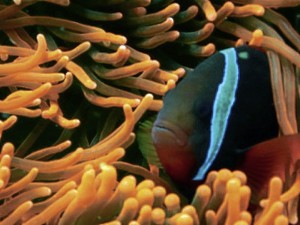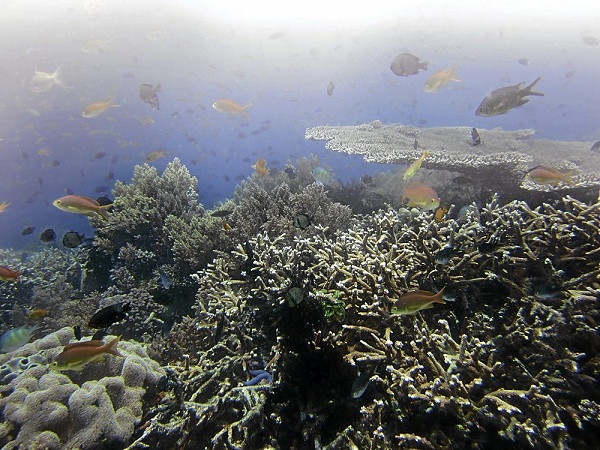
It’s been a long while since I returned to the ocean, my “home,” so to speak, second to the forests. To see and marvel at the richness of the seas! The biodiversity is indeed unmatched!
This story begins in Bohol, an island in Central Visayas, rich in culture and, if I am not mistaken, one of the two provinces declared as a cantonal republic after the war for independence from Spain (the other is Negros).
We went to Loboc, viewing the rich and clean Loboc River along the way. Eventually, we also met with the smallest primates in the world, the tarsiers. These mammals sleep in the daytime and are awake at night, like bats. They gestate for six months and give birth to only one offspring.
 The wonders that are the tarsier will go on forever as long as they are protected, conserved and treated with respect, even in their sleep. After all, they are mammals like us.
The wonders that are the tarsier will go on forever as long as they are protected, conserved and treated with respect, even in their sleep. After all, they are mammals like us.
Then off we went to Balicasag Island, world-famous for its marine biodiversity, along with Pamilacan and other areas in Bohol.
We saw gigantic turtles, many of them just swimming freely, as well as schools of jackfish. The coral reefs are considered among the most diverse on the planet, and are said to be even richer than the Great Barrier Reef in Australia.
Our being part of the “coral triangle” explains why we host the most diverse marine species in the world. We should take pride in that!
It was sheer joy to be back in the water. It was while scuba-diving long ago, in the 1970s, that we were educated and exposed to the environment and its crucial role in our lives. It was our “baptism of water” to the advocacy now being pursued for a lifetime.
 I remember when Presidential Decree No. 1219, known as the “Coral Resources Development and Conservation Decree,” was issued by then President Ferdinand Marcos. We immediately went to Washington with Tom Garrett of the Animal Welfare Institute and lobbied with US Sen. Warren Magnuson to have Philippine corals included in the Lacey and Black Bass Act. It was amended and signed into law by US President Ronald Reagan in 1980, thus leading to the ban on Philippine corals from entering the United States.
I remember when Presidential Decree No. 1219, known as the “Coral Resources Development and Conservation Decree,” was issued by then President Ferdinand Marcos. We immediately went to Washington with Tom Garrett of the Animal Welfare Institute and lobbied with US Sen. Warren Magnuson to have Philippine corals included in the Lacey and Black Bass Act. It was amended and signed into law by US President Ronald Reagan in 1980, thus leading to the ban on Philippine corals from entering the United States.
In those days, one could find Philippine corals being sold as decor everywhere, from Paris to London to New York.
Unknown to many, this was one of our greatest achievements: Saving our corals and having them included as well in the Convention on International Trade in Endangered Species of Wild Fauna and Flora (or CITES), with the help of Dr. Ed Gomez of the University of the Philippines’ Marine Science Center, which today is an institute of great relevance.
Coral reefs, like mangrove swamps and estuaries, are vital ecosystems in the marine environment. Without them we will have no chain of life.
I am happy with the way Bohol has managed its environment, and hope that other provinces will follow in its footsteps.
I am proud to have gone back to our roots, our underwater classrooms, and to know that our marine species are thriving.
Let us protect and conserve our environment! This commitment has to be as deep as the sea.
Antonio M. Claparols is the president of the Ecological Society of the Philippines.















































